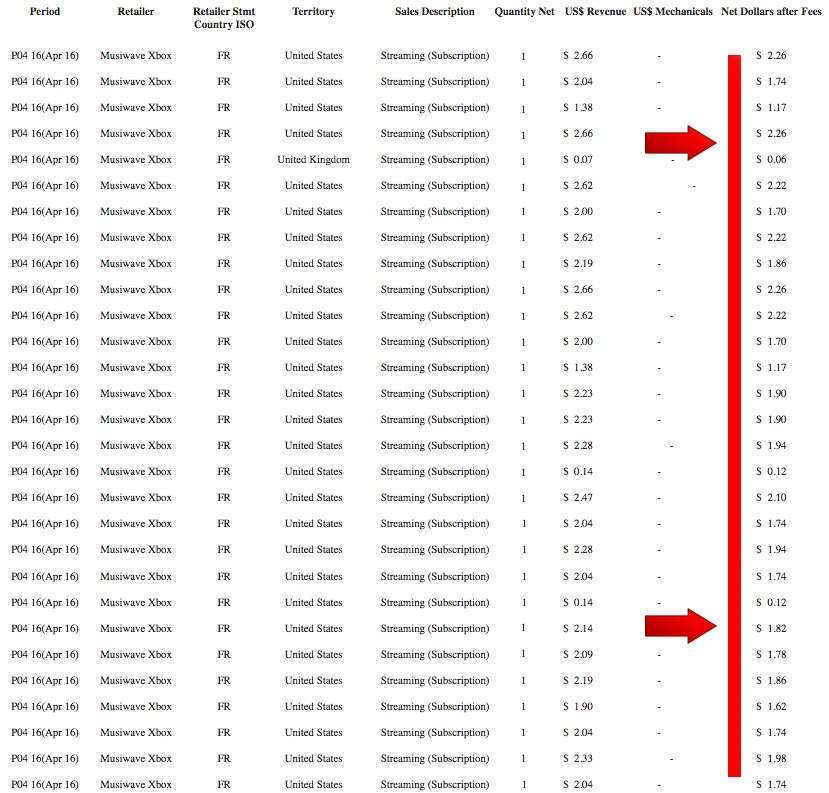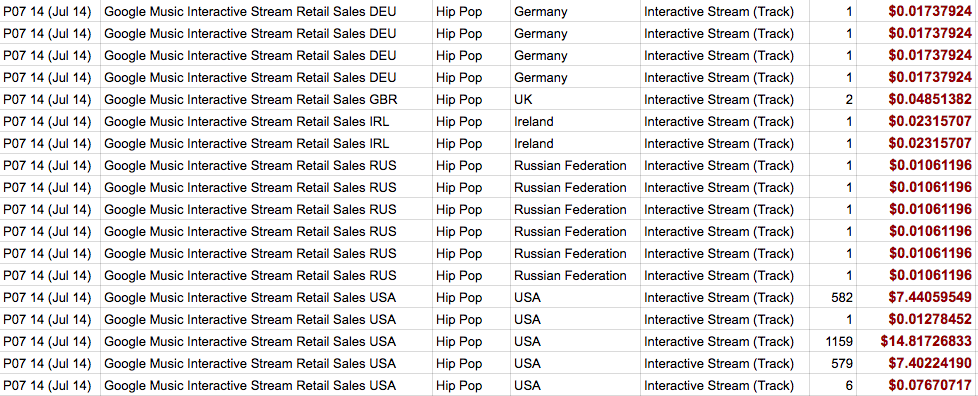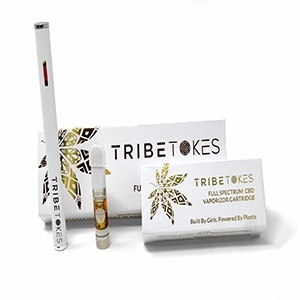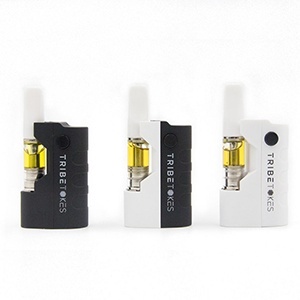by Paul Resnikoff
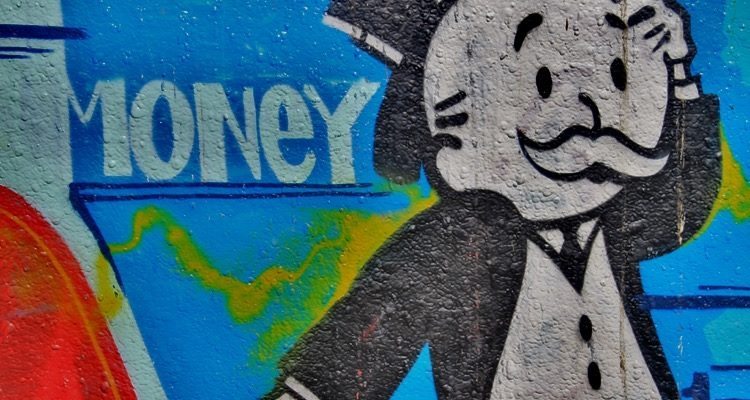
This is how you can hack your streaming royalties.
Earlier this year, DMN starting asking artists and labels to share their streaming royalty statements, which unearthed a pile of incredible per-stream statistics.  That’s part of an ongoing data-sharing project to battle the incredible lack of transparency in the streaming music space (and, please send your royalties to news@digitalmusicnews.com to share with the community, confidentiality protected).
The statements we’ve received so far include a rock band from France, an indie label from Quebec with 2.5 million YouTube streams,  and an ‘average American band‘.  That complemented earlier statements from a Grammy-nominated songwriter, one of the first Tidal royalty statements, and a blunt statement from Lady Gaga’s ex-manager on major label royalty payouts (or lack thereof).  By the end of this initiative, we’re hoping to publish a vast tranche of data that helps everyone figure out what they should be getting from their streaming plays.
We’re just getting started on this project, but things are starting to roll in from different corners.  That includes the results of this very interesting experiment from an indie rap label, which unearths some major payout disparities that can (and should) be taken advantage of.
Basically, what the head of this label found out is this: different streaming platforms are paying wildly different rates, with some smaller, paid services distributing vastly superior per-stream payments.
These differences are oftentimes extreme, making it possible to dramatically improve your streaming payouts by focusing on these higher-paying platforms.  The result is more money for your artists, right now.
OK, so let’s get started on how to re-tread your digital distribution to make this happen.
Step 1: De-emphasize lower-paying platforms like Spotify and YouTube.
You don’t have to pull your content; just pay less attention to the giant, mostly free streaming platforms.
For starters, Spotify payouts are really bad: according to most royalty statements we’ve seen, Spotify typically pays less than half-a-penny per stream ($0.005), and often less than one-third of a penny ($0.0033).  This is driven by a lot of factors, including huge numbers of free, ad-supported plays, and lots of money siphoned off by major label special deals.
According to leaked contracts and other information shared with DMN, that includes preferential, lower-cost ad units for major labels, as well as upfront cash advances. Â Attorneys have told us that the emphasis by big labels in more recent years has been on granting ownership shares to major labels, but that places even more pressure to prioritize big-budget acts like Demi Lovato and Justin Bieber.
The end result is that upstream cash is taken off the table before smaller labels and artists can claim it, driving per-stream revenues into the gutter. Â Meanwhile, major label artists often have a difficult time getting paid on Spotify streams, making this entire platform very difficult to monetize except for a core group of insiders, which includes major labels and superstar artists.
Now, Spotify is one of the largest streaming music platforms on the planet, and that can translate into exposure.  So, it may be unwise to yank your content from Spotify if you’re anything smaller than Adele.  And get into enough plum playlists, and that can create a big story for the right artist.
It can also translate into some cash, and there are definitely examples of this (Nashville-based artist Perrin Lamb is one).  But these aren’t windfalls, according to the experts we’ve talked to, and playlist inclusion is mostly about gaining new fans (that you can monetize some other way).
YouTube = poverty.
Which brings us to YouTube, which is notorious for being the worst-paying streaming music platform on the planet.  Basically, there are two forms of monetization on YouTube: direct music video matches and those picked up by ContentID.  Both completely suck, and if you don’t believe that, take a look at this royalty breakdown from a Canadian label with 2.5 million YouTube plays.
YouTube (proper music video plays): $0.001005 Canadian ($0.000794 US) per stream.
YouTube (Content ID): $0.001342 Canadian ($0.001061 US) per match.
In total, the label earned less than $2,000 for its 2.5 million plays (you can read more about that here), which is part of the reason the entire music industry is now declaring war against YouTube (and this could get ugly).  But that doesn’t mean pull your content off of YouTube, especially given the massive amount of users on this site. But it does mean to give up any hope of making real money off this platform.
There’s just no money on YouTube.  Which means you have to try some other paths to earn money.  So it’s time to start outmaneuvering the system.
Now, Spotify is one of the largest streaming music platforms on the planet, and that can translate into exposure.  So, it may be unwise to yank your content from Spotify if you’re anything smaller than Adele.  And get into enough plum playlists, and that can create a big story for the right artist.
It can also translate into some cash, and there are definitely examples of this (Nashville-based artist Perrin Lamb is one).  But these aren’t windfalls, according to the experts we’ve talked to, and playlist inclusion is mostly about gaining new fans (that you can monetize some other way).
YouTube = poverty.
Which brings us to YouTube, which is notorious for being the worst-paying streaming music platform on the planet.  Basically, there are two forms of monetization on YouTube: direct music video matches and those picked up by ContentID.  Both completely suck, and if you don’t believe that, take a look at this royalty breakdown from a Canadian label with 2.5 million YouTube plays.
YouTube (proper music video plays): $0.001005 Canadian ($0.000794 US) per stream.
YouTube (Content ID): $0.001342 Canadian ($0.001061 US) per match.
In total, the label earned less than $2,000 for its 2.5 million plays (you can read more about that here), which is part of the reason the entire music industry is now declaring war against YouTube (and this could get ugly).  But that doesn’t mean pull your content off of YouTube, especially given the massive amount of users on this site. But it does mean to give up any hope of making real money off this platform.
There’s just no money on YouTube.  Which means you have to try some other paths to earn money.  So it’s time to start outmaneuvering the system.
Step 2: Hack better-paying platforms like Tidal and Groove Music.
Back to the indie rap label mentioned earlier.  As part of a big experiment, the head of this label decided to put his music on as many different platforms in as many different countries as possible.  And, here’s what this person earned over a multi-month period on both Tidal and Groove Music (owned by Microsoft, also referred to as Xbox Music and formerly Zune Music).  These are average payouts across a substantial artist catalog.
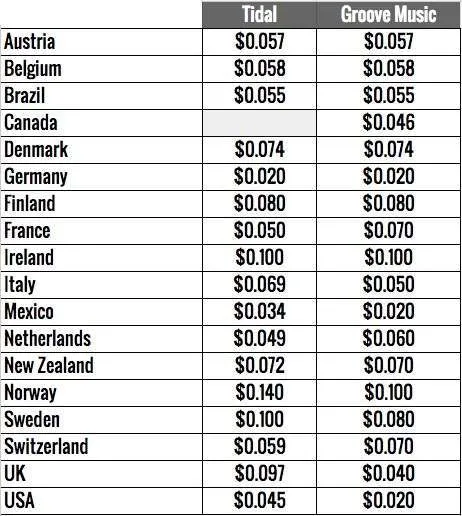
As you can see, both of these platforms delivery wildly better payouts per stream. Â While Spotify is rarely getting over $0.005 (half a penny) per stream, Tidal and Groove are consistently delivering multiples of that. Â But even at its worst, Tidal and Groove are delivering 2 cents per stream (see Germany), but sometimes hitting as much as afull-blown 10-cents per one stream (see Sweden and Ireland).
(Note that some of these payouts appear to be exactly the same, but they actually differ once the number of digits expand beyond three decimal places.)
The full dime might be a temporary anomaly (see more on that below), but the overall payouts aren’t accidental.  Because even the worst payouts are at least double the best payouts you’d get from Spotify.
These aren’t typos, rather, they are the essence of this hack.  These payments are multiples better than Spotify and YouTube, even for smaller artists.  This is a loophole that smart label managers and artists are smartly working right now.
And, it should be mentioned that none of the artists on this label have hit it big yet (or have any huge hits). Â But they are making music that enough people want to enjoy.
Step 3: Exploit Temporary, High-Paying ‘Accidents’
While we’re on Groove Music, it should be mentioned that there are some strangely high payments being doled out right now.  These are probably shorter-term anomalies while these platforms get out of their early stages with modest userbases, but they can be exploited to great gain right now (as in, do it now).
Take a look at this royalty breakdown involving Groove Music, from the same label manager (using songs from a broader group of labels).
Yes, that’s right, some of these streams are paying $2+ dollars per stream.  It’s right there in the statement, for one stream.  Yeah, it’s messed up, but finally it’s messed up in the artists’ favor.  “The streaming system is seriously flawed,†the person running the experiment told us.  “How can they pay more in a per stream royalty rate than it actually costs to simply download the single and own? LOL.  But hey unlike most of the people commenting on your posts, the labels I help aren’t complaining.â€
Step 4: Move onto other, smaller, paid-only platforms.
Abnormal upper-end blips aside, there’s a reason why Tidal and Groove offer superior payments to artists: they are smaller and paid only.  That means every stream is counted against a paid pool from a smaller group of users, without the masses of free, ad-supported listeners.  That smaller group in turn triggers a smaller number of streams, with (numerator over denominator) produces a far bigger payout per stream.
Sure, Spotify has 30 million paying subscribers, but the problem is with the 70 million free users.  And Spotify doesn’t pay artists that attract paying subscribers better, even if 100% of your fans are premium users.  You, like every other label and artist, get lumped into the low-rent pool, dragged down by ‘freemium’ users.  “We have GLOBAL distribution to all available stores even Deezer which is not yet available in the USA,†our source relayed.  â€
“However, why would we promote music to platforms that pay $.0007 per stream?â€
Speaking of global, it’s important to get into as many different countries as you can, because you never know where things can pop.  And, have you tried Google Play?  Here’s a breakdown from 2014, so it’s a little dated, but it also illustrates the principle at hand: smaller paid platforms, spread out to different countries.
Again, this blows away anything from Spotify, YouTube, or other large, free-access platforms like Deezer.
Step 5: Make Sure You’re on Apple Music.
Apple Music is actually getting pretty big, and it’s also paid only.  At last count, Apple had 13 million paid subscribers, which is nearly half the number on Spotify.  But unlike Spotify, they have zero free-access users (unless it’s a free trial, for which they also pay).
That said, we haven’t seen too many statements from Apple Music yet, probably because it’s less than one year old.  But from what we’ve seen and heard, the royalties aren’t bad at all (though you’re probably not going to get Groove-style payments).
Unfortunately, it’s nearly impossible to get featured on Apple Music unless you’re a superstar of major-backed artist, but there’s absolutely no reason not to at least position your music here.  Lightning does strike, and you could get factored into a popular playlist and enjoy the elevated payouts.  So why not?
Step 6: Promote Like Crazy and Monitor.
The most critical aspect of this strategy is to stop wasting your time promoting your content on crowded free platforms, while dedicating greater time to promoting the niches to draw greater revenues.  Let’s be blunt: the major labels own the front door of Spotify, because they paid for it.  You’re not getting in.  It may be 100 times easier to get on the front door of Groove, and about 10,000 times more profitable.
It’s also key to make sure to keep a tally of everything, something your digital distributor will handle for you.  After bull-charging the little guys, monitor like crazy to see where your biggest gains are coming from.  Just scour through the data looking for blips; oftentimes it will smack you in the face.  You will be pleasantly surprised.
But how much more will you make? Â Obviously results will vary, and the upside will totally depend on your content and the extent of your campaign. Â But one digital distribution exec we spoke with estimated that a conscientious label or artist can easily expect to quintuple their revenues in a matter of months. Â That is, after spendingabout an hour re-tooling your strategy and approach.
After setting these changes in motion today with your digital distributor, and then setting a new promotional and monitoring game plan in place, you’ve started the wheels on a totally different ‘stream’ of income.
Good luck! Â I hope these hacks help you make a lot more money off of streaming!
And last thing: please keep DMN posted on your progress (in comments below or to news@digitalmusicnews.com), and share as many statements as you can.  We’ll keep everything confidential. Â





